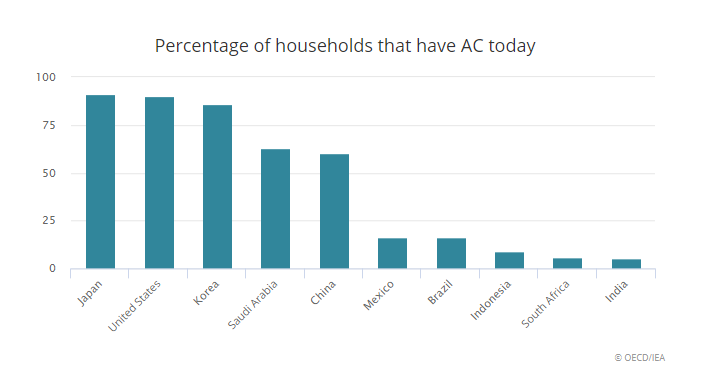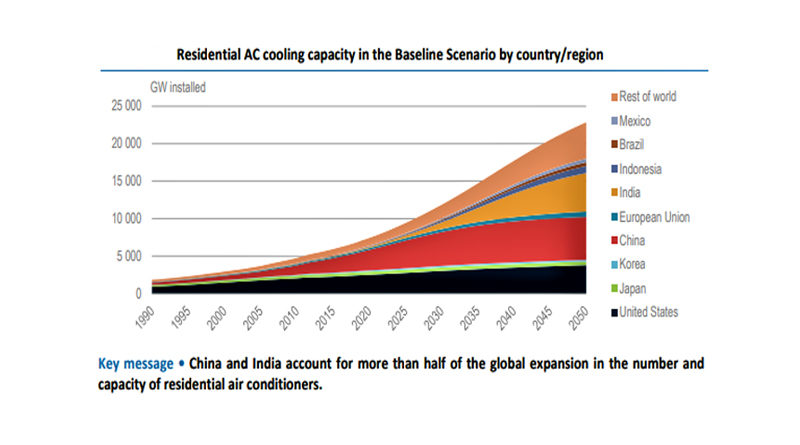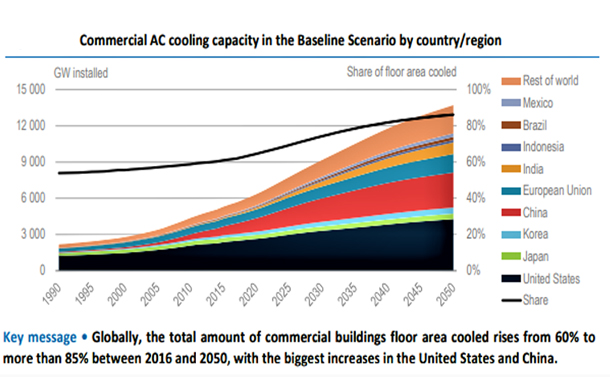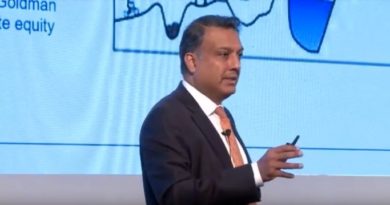As the earth heats up, IEA report puts the future of cooling in focus

At a select gathering in New Delhi, today, the International Energy Agency (IEA) presented its report, “Future of Cooling- Opportunities for energy efficient air conditioning”, placing the spotlight on one of the biggest consuming category of energy, and contributors to global warming. The report was presented by Paul Simons, Deputy Executive Director, IEA, along with India Programme Manager, Bruce Murphy. The IEA team was hosted by the Bureau of Energy Efficiency, part of the Ministry of New and renewable Energy. Mr Gyanesh Bharti, Joint Secretary, MEFCC, along with Abhay Bakre, DG, BEE hosted the team.
Starting with the simple fact that 20% of the world’s energy is taken up by air conditioners and fans in buildings, the report is notable for the special attention and focus on India, which is fast emerging as the global hotspot for not just climate change, but also, demand for energy and by default, a boom in cooling requirements for its population.

Just a quick perspective here. China, in the last two decades has moved from a level of 1% to 60% of population with access to air cooling. India, by contrast, is at barely 6% right now in terms of AC ownership, leaving more than just its own energy choices of the future in the balance as more people in India catch up on air conditioning.
The report highlights the potential impact of this new demand, with scenarios for both the savings from using better technology (upto 8 TwH), besides the urgent need to act faster to move to efficient building codes and more to control the implications of the coming demand for cooling.
India is already seeing the impact of rising demand for cooling, with peak loads in its biggest cities influenced massively by AC demand. The capital, New Delhi, for instance, now sees demand peaking in the evening during summer months, at close to 7 GW, driven primarily by spike in residential demand for cooling .
The implications of using the wrong (or right) technology for cooling, besides other steps to ensure more efficient cooling, go well beyond just the immediate benefits of lower energy consumption and the consequent impact on the environment. A simple extrapolation of the extra demand for cooling vis a vis the projected contribution of renewables simple does not square up for instance. The inconsistent nature of renewables supply would mean the establishment of massive storage capacity to even out demand spikes, adding to the cost of renewables.


data:iea.org/cooling
The authors have highlighted critical action points, besides technology. From changing consumer attitudes , a problem from the US to China it seems, to bringing public and private stakeholders together to tackle the cooling challenge, its quite obvious that hacking a solution that is acceptable to an emerging and large consumer like India will make or break the cooling challenge for more than just the Indian subcontinent. One reason why the Indo German Energy Forum, a forum to explore efficient energy solutions with German support was present too, with promises to lend full support to the ‘hot’ issue of cooling.
video:iea.org/cooling
copyright:iamrenew.com




